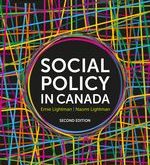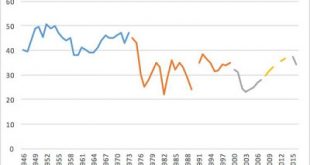Posted by Nick Falvo under aboriginal peoples, Alberta, budgets, Child Care, cities, demographics, education, employment, environment, fiscal federalism, fiscal policy, gender critique, homeless, housing, HST, income, income distribution, income support, Indigenous people, inflation, minimum wage, municipalities, NDP, oil and gas, poverty, privatization, progressive economic strategies, Role of government, social policy, taxation, wages, women. November 29th, 2017Comments:...
Read More »Income and geographic distribution of low-income renters in Toronto
In this second of a series of housing-related posts I analyze the income and geographic distribution of renter-occupied households in the City of Toronto. My first post focussed on affordability and inequality trends by analyzing time series (2001-16) data for Ontario by household income quintiles. As a complement, this blog studies the income and geographic distribution of low-income and other renter households in Toronto based on census-tract (CT) data for 1996 and 2006. I expect to update...
Read More »Book review: Social policy in Canada (2nd edition)
Oxford University Press has recently released the second edition of Social Policy in Canada, co-authored by the father-daughter duo of Ernie Lightman and Naomi Lightman. I recommend this book as an excellent resource for students of social policy. It will be useful for classroom instruction, while also being a handy reference for researchers, persons who design and administer social policy, and persons who advocate for improved social policy. Here are 10 things to know: 1. The book does an...
Read More »Housing Affordability and Inequality: Low-Income Renters in Ontario
I dedicate this post to the memory of Bonnie Briggs, who died earlier this month, in honour of her lifelong and tireless work on housing and homeless issues in Toronto. In this first of a series of housing-related posts I analyze rental housing expenditures for low-income households in Ontario. Rent is the single largest expenditure element for renters in the first and second household income quintiles and is therefore an important indicator of housing affordability and expenditure...
Read More »The wage share in Argentina
In his book, Estudios de Historia Económica Argentina, Eduardo Basualdo has several tables with the data for the share of wages in income. Sources seem to be different and not necessarily compatible (although I 'm not sure about that). He also published a paper in 2008 with additional data. The graph below adds the numbers shown here, which I think are also from Basualdo (the newspaper only cites CIFRA; I couldn't find another source in their website). To the extent that one can trust...
Read More »The Wage Structure, Rents and Urban Inequality in Canada
Richard Florida’s new book, The New Urban Crisis (Basic Books, 2017) takes a careful look at rising inequality in big cities in the United States. He details the fact that many of the winners of today’s economy, the top 1% and top 10%, are located in a small number of “superstar” cities such as New York, Los Angeles, the Bay area, Washington and Boston where well paid jobs in higher education, finance, tech, higher education and entertainment are highly concentrated. These cities are...
Read More »Fiscal situation of Canada’s ‘oil rich’ provinces
I’ve just written a blog post about the fiscal situation of Canada’s ‘oil rich’ provinces (i.e., Alberta, Saskatchewan and Newfoundland and Labrador). It consists of a summary of key points raised at a PEF-sponsored panel at this year’s Annual Conference of the Canadian Economics Association. Points raised in the blog post include the following: -The price of oil is impossible to accurately predict, and there’s no guarantee it will rise to past levels. -Each of Canada’s ‘oil rich’ provinces...
Read More »Ten things to know about social assistance in Canada
I’ve just written a blog post about social assistance in Canada. Points raised in the blog post include the following: -Social assistance has two contradictory objectives: 1) to give people enough money to live on; and 2) to not give people enough money to live on. -Very few immigrants receive social assistance (relative to the general population). -Several Canadian provinces have seen a rise in persons with disabilities receiving social assistance. -The inadequacy in social assistance...
Read More »The introduction and evolution of child benefits in Canada
Allan Moscovitch and I have co-authored a blog post that looks at the history of child benefits in Canada. Points made in the blog post include the following: -Child benefits can reduce both poverty and homelessness. -When child benefits began in Canada after World War II, one major motivating factor for the federal government was to avoid recession. Another was to fend off social unrest (i.e. Canada’s growing labour movement and the growing popularity of the CCF). The full blog post can be...
Read More »A Response to the 2017 Saskatchewan Budget
I have an opinion piece on Saskatchewan’s recent budget in the Regina Leader-Post. Points raised in the opinion piece include the following: -Reductions in personal and corporate income taxes help the rich more than the poor (and this budget cut both personal and corporate income taxes). -Increases in sales tax hurt the poor more than the rich (and this budget increased both the breadth and the rate of the provincial sales tax). -A one-dollar increase in government spending on public...
Read More » Heterodox
Heterodox



